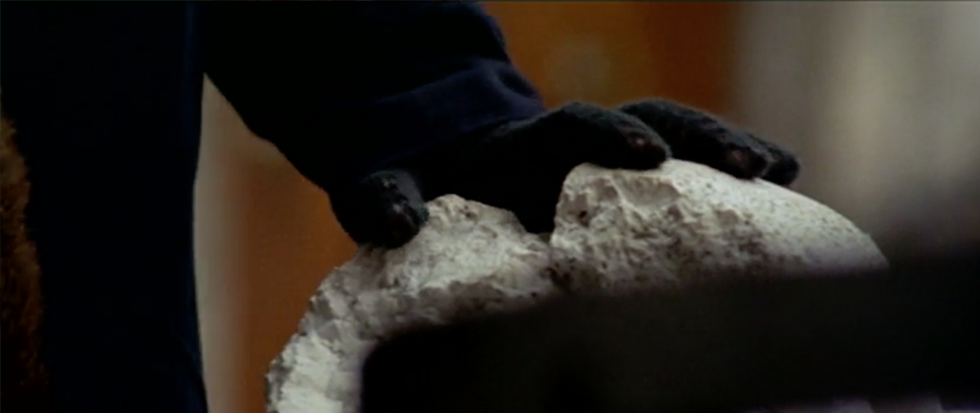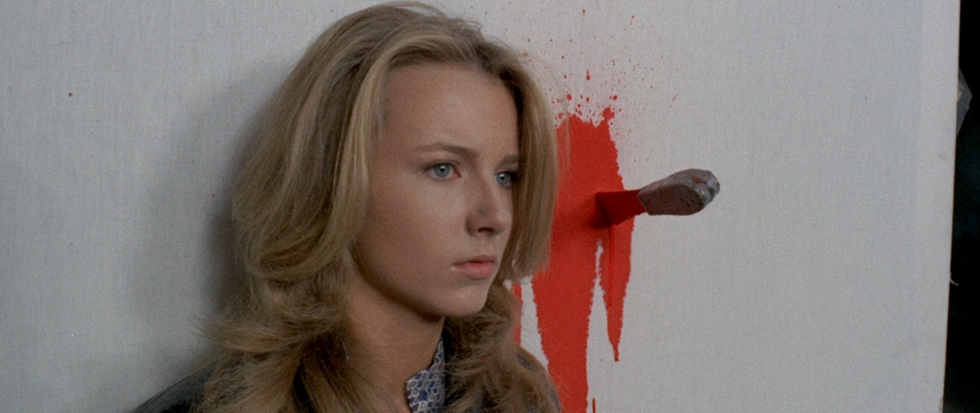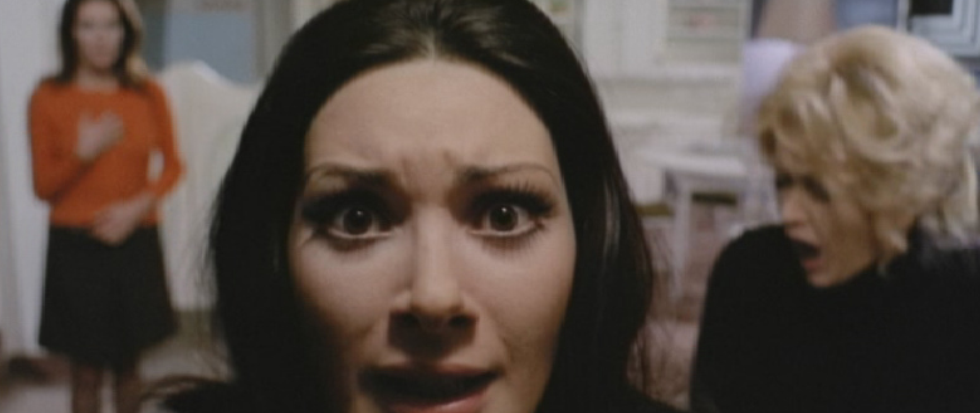
On Who Saw Her Die?
Giallo film was a cycle of Italian murder-mysteries that flourished for a few decades in the mid-20th century. Giallology is a humble appreciation of these movies.
—————
1972’s Who Saw Her Die? is Aldo Lado’s second movie, after the fabulous 1971 Short Night of Glass Dolls, and his work is flat-out my favorite discovery of this column so far. I will say up front that Glass Dolls is a better movie than Who Saw Her Die?, but both of them are near the top of the Giallology heap.
Onetime James Bond George Lazenby stars as Franco Serpieri, a sculptor living in Venice with his daughter Roberta. Lazenby never locked into the established Bond machismo, but the off-kilter sensitivity he brought to On Her Majesty’s Secret Service enriches his role as Franco. Incidentally, he also looks like George Harrison doing porn.
Also starring are Nicoletta Elmi as Roberta (Demons, Flesh for Frankenstein, Deep Red), Anita Strindberg (Julia in A Lizard in a Woman’s Skin) as Franco’s wife Elizabeth, Adolfo Celi (Thunderball, continuing the Bond theme), and Dominique Boschero (All the Colors of the Dark). The master Ennio Morricone provides a remarkably eerie score, built on a children’s choir and an insistent single-note bassline, which Lado uses sparingly. In scenes where Lado crosscuts between someone being stalked and Franco going about his investigation, the score only appears in the stalking scenes; it’s attached to the murderer’s POV, almost functioning as their theme.
In its broad strokes, Who Saw Her Die? is remarkably similar to Nicolas Roeg’s giallo-inflected Don’t Look Now—made only a year later in 1973. Lado’s film is about a couple living in misty, Gothic Venice who lose their child; Roeg’s film is about a couple who moves to misty, Gothic Venice after losing their child. There are premonitions of Roeg’s fluid, subjective editing style in the slippery intercutting that characterizes the psychological schema of both Lado’s giallo. And of course the spectral mystique of nocturnal Venice could fuel a hundred of these movies.

But Who Saw Her Die? deserves to be more than a cinephile footnote. Lado, editor Angelo Curi (also of Death Walks On High Heels), and DP Franco Di Giacomo (Argento’s Four Flies On Gray Velvet) construct an oppressive conspiratorial atmosphere. Shots are held just long enough to seem significant despite their innocuous subjects; suspense is built from obscured figures and creeping shadows and imposing edifices. The film’s climax switches on a dime into something like supernatural horror, as Franco stumbles into a sepulchral abandoned building and figures emerge from the fog like a procession of ghosts, arranging themselves around him without Lado cuing the audience as to their intent nor identity. It’s an unnerving setpiece, partly because of its placid tone: no music and barely any sound effects as it stretches further and further out on a tightrope of tension, the architecture refusing to resolve beyond lines and arches.
Unlike Short Night of Glass Dolls, there is a killer in Who Saw Her Die?, revealed only in glimpses: a black heel here, lace gloves there, and of course via POV shots, obscured by a veil. There are only two on-screen kills though: first, a young girl, who has her head smashed in by a rock in the film’s first five minutes. Quite an opening. And second, a woman in a theatre, strangled, blood welling up in her mouth as whirling POV shots communicate her frantic terror. The best is saved for the killer’s death, which comes virtually seconds after their unmasking—no time for speeches here! They are set alight by a candelabra crashing to the floor, wrapped in flames within seconds. Then they crash through a window, which Lado runs back at least five times like he’s John Woo; the burning body tumbling head-over-heels to their death as Morricone’s score blares. When the killer finally hits the ground, the score cuts out immediately.
Who Saw Her Die? doesn’t have the same propulsive feeling of doom as Short Night of Glass Dolls; it is more resigned, more weary. In a vivid piece on the film, writer claire diane says that if Lado’s earlier film “is a premonition of apocalypse, [Who Saw Her Die?] looks back, on the brink, and sees demons eating children.” Lado arguably softens the impact of the film, though, in revealing in the last moments that the killer is an imposter posing as a priest and not an actual priest. It’s also difficult to unravel the red herrings in the last fifteen minutes thanks to the dub. In a few key scenes, the actors are just shouting important information over each other, rendering it all unintelligible. Criterion Collection … where are you?

That said, there is anger in this film. Children murdered before they could “become sinners” and powerful men sexually exploiting vulnerable women. Sex is both feared and weaponized, the thing that links the outcast murderer and the entrenched ruling class. In a near-reversal of Don’t Look Now’s iconic, expressive sex scene, Franco and Elisabeth have depressing mourner sex as tears stream down her face and he meekly thrusts into her. Lado shoots their torsos and their faces as separate components, never seen in the same shot. Claire Denis uses the same trick in her 2001 Trouble Every Day; it’s a blunt, effective way of communicating dissociation.
Corruption is as omnipresent as water in Lado’s Venice. No surprise, then, that Roberta is given an Aquarius charm, the water carrier, before her death. And (the age of) Aquarius also connotes liberated sexuality—anathema to a social structure that thrives on dominating women via sex. There is so much effortless texture to Aldo Lado’s giallo. His work picks up on the genre’s latent potential for social commentary and atmosphere, where nearly every other director regurgitates barely examined misogyny between parades of kill scenes. That neatly explains his relatively unknown stature, as a director not bloodthirsty enough for the horror fans and not tasteful enough for the cinephiles, but it only makes him ripe for endless rediscovery.




